Understanding Polygon Perimeter: A Young Learner's Guide
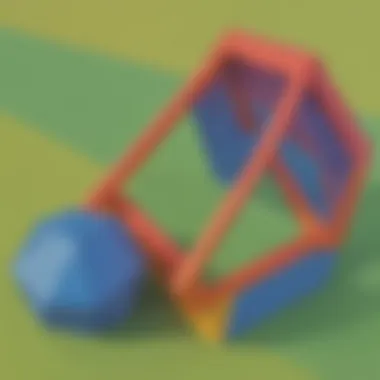
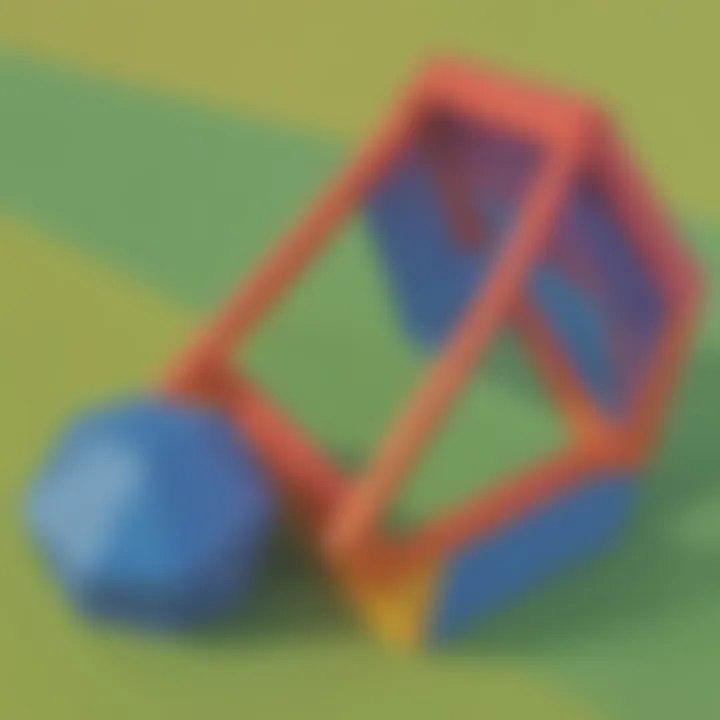
Intro
Polygons are more than just shapes. They are constructs with defined boundaries, and understanding their perimeter can unlock a larger grasp of mathematical concepts. For young learners, the perimeter of a polygon is simply the total distance around the shape. In this guide, we will explore key ideas and interactive elements that foster not only comprehension but also engagement with the concept of perimeter. It’s a building block in geometry that connects to other areas of math, making it essential in a child's education. In addition, we strive to make learning about perimeter exciting and approachable.
Creative Activities
Engaging in hands-on activities can reinforce the understanding of how to calculate the perimeter and why it matters. Below are some ideas that young learners can try, along with detailed instructions.
Craft Ideas
- Polygon Art: Young learners can create polygon shapes using colored paper, scissors, and glue. This visual representation allows them to physically see the sides they will measure for the perimeter.
- Perimeter Parade: Using string or a ruler, children can measure the perimeter of everyday objects around the home or classroom. For example, measuring the perimeter of the classroom board or a lunch box makes it relevant.
Step-by-Step Guides
- For Polygon Art:
- For Perimeter Parade:
- Cut out different polygon shapes (triangle, rectangle, pentagon).
- Use the shapes as templates to discuss the number of sides.
- Measure each side using a ruler or measuring tape.
- Add the measurements to find the total perimeter.
- Select an object.
- Measure each side, explaining what a 'side' is.
- Add all the measurements to get the perimeter.
Educational Value
These activities not just motivate children to engage with math in a tactile way, but they also bridge the gap between theoretical knowledge and practical application. Awareness of geometry in everyday items fosters a deeper appreciation for mathematics.
Fun Quizzes
After learning how to calculate perimeter, quizzes can solidify that knowledge in a fun way. It encourages retention and confidence in the material learned.
Quiz Topics
Some of the quiz subjects focus on:
- Understanding various polygons.
- Simple perimeter calculations based on given dimensions.
- Real-world applications of perimeter.
Question Types
The quizzes will offer different kinds of questions:
- Multiple choice to test basic knowledge.
- True/False questions that challenge their understanding.
- Fill-in-the-blank to assess recall ability.
Knowledge Reinforcement
Quizzes are powerful learning tools. They allow children to measure their comprehension, identify areas requiring further clarification, and track their progress. These can pave the way for challenging concepts later in math.
Fact-Based Articles
To enrich the learning experience, supplemental reading provides a broader context for polygons and perimeter.
Topics
A variety of articles can complement this guide, covering lessons on:
- Properties of shapes and angles.
- Real-world examples of polygons.
- The history of geometry and the significance of perimeter.
Engaging Content
The articles present information in a clear, accessible manner with illustrations when possible. For young learners, this ensures concepts are not overwhelming and remain approachable.
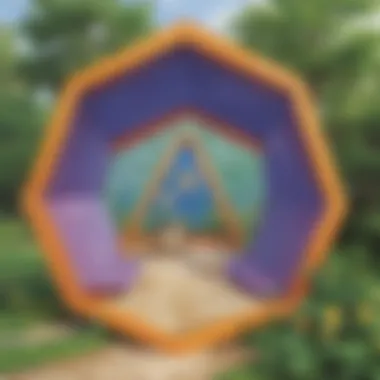
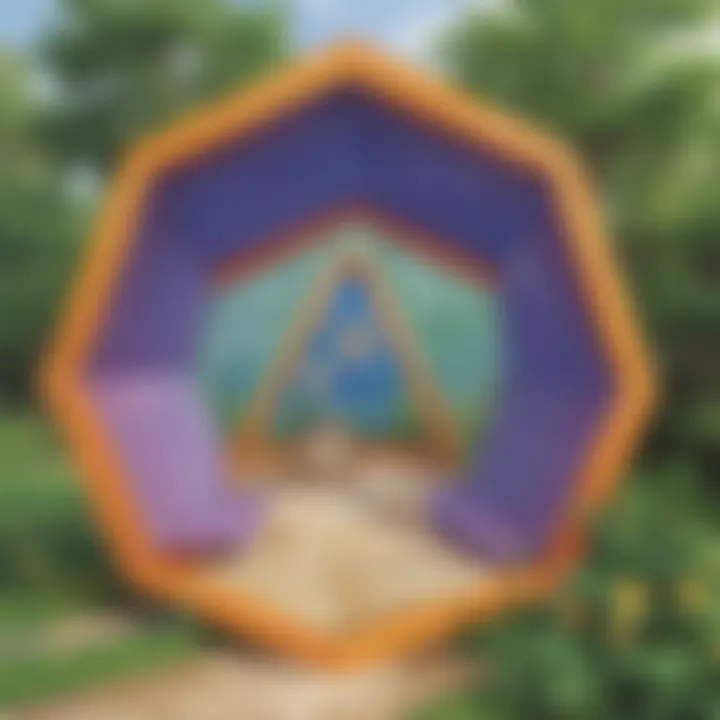
Prelims to Polygons
Understanding polygons serves as the foundation for grasping concepts related to perimeter. Polygons are basic geometric shapes, encountered daily in various forms. When young learners discuss perimeter, knowing what contributes to a polygon is fundamental to enhancing their grasp of this important mathematical aspect.
A polygon is a multi-sided shape. Its structure offers opportunities for calculating and visually comprehending spatial relationships. Kids can use familiar examples like stop signs, which are octagons, or windows that often resemble rectangles or squares. Each serves to illustrate how boundaries of a shape are traced, setting a natural stage for learning about perimeter.
Familiarity with polygons eases the journey into more advanced geometric concepts. It also provides a framework for applying mathematical reasoning to things seen in the environment. This intro lays down the essential groundwork for children eager to understand perimeter in practical and educational ways.
What is a Polygon?
A polygon is defined as a closed shape made up of straight line segments. The key of a polygon involves three or more sides and does not cross itself when drawn. Simple shapes like triangles with three sides and squares with four sides are examples that offer clarity. Kids can engage with such examples to identify polygons from non-polygons, which do not fit these criteria.
When children learn the definition well, they find more enjoyment in discovering polygons around them. It’s a vital part of the exploration, as recognizing polygons is a crucial skill that contributes significantly to later discussions about perimeter and area.
Types of Polygons
Polygons come in diverse forms, and recognizing these types enriches understanding. There are two primary categories to highlight: convex and concave polygons, and regular and irregular polygons.
Convex and Concave Polygons
Convex polygons bulge outward. Each interior angle measures less than 180 degrees, giving them a simple, smooth shape. They are more intuitive for kids who see fewer complications when working with angles and sides. This clarity makes teaching functional, without excess tangles in understanding.
Contrasting this, concave polygons dip inward. They feature an angle greater than 180 degrees. As a result, these shapes can confuse learners a bit more, making them less appealing for initial introduction but important for comprehensive teaching about diverse polygon characteristics. Knowing both gives kids a complete view, critical for their developing understanding.
Regular and Irregular Polygons
Regular polygons are special because all their sides and angles are equal. Examples include an equilateral triangle or a square. Young learners often prefer them for their symmetry, which offers simplicity when calculating perimeter.
Conversely, irregular polygons lack that equality among sides. This may frustrate calculation, yet exposing children to variability allows them to exercise adaptability in recognizing, measuring, and understanding diverse shapes. They learn that simple principles of perimeter apply uniformly, irrespective of a polygon’s uniformity or lack thereof.
Understanding Perimeter
Understanding perimeter is an essential concept in geometry and plays a significant role in various real-world applications. Knowing how to measure the boundaries of shapes allows young learners to visualize, analyze, and explore their surroundings more effectively. It serves as a foundational element in geometry, offering insights not just for academic learning but also for practical tasks like measuring spaces when arranging furniture or planning a garden.
To fully grasp perimeter, students first need to differentiate it from related concepts like area. While area measures the space within a shape, perimeter quantifies its outer edge. This basic distinction lays important groundwork for their mathematical development.
Defining Perimeter
Perimeter is defined as the total distance around a polygon. In straightforward terms, one can think about it as the length required to walk around a shape. For example, if you have a square or a triangle, by adding up the lengths of all its sides, you arrive at the perimeter.
Products like rulers or measuring tapes can help in this process. Intuitively, learners may understand that in a safe environment, walking from one corner of a shape to another takes time and distance. These concrete experiences help solidify what perimeter is.
Mathematically speaking, if one were to express it formulaically, perimeter is represented by the sum of the lengths of each side:
Perimeter (P) = side 1 + side 2 + side 3 + + side n
By referring to various shapes, kids can relate the definition to their everyday experiences. Engaging them in hands-on activities makes the learning process meaningful.
Formula for Calculating Perimeter
The formula for calculating perimeter can differ based on the type of polygon. Each shape has a unique set of rules when it comes to measuring its distance around the boundary.
For common polygons, here are some simplified formulas:
- Triangle: The perimeter (P) is calculated by adding all three sides:
P = a + b + c
Where , , and are the lengths of the sides. - Rectangle: The perimeter (P) can be expressed as:
P = 2(length + width)
With and being the two distinct dimensions. - Square: The perimeter (P) is notably straightforward:
P = 4 × side
Where is the length of one edge.
All these formulas reveal how perimeter calculations involve summation, emphasizing the significance of addition skills. Testing responsiveness to varied shapes helps in reinforcing the learning experience. By manipulating parts of the exploration and providing feedback, educators can clarify intricacies of each formula, ensuring deeper understanding among young learners.
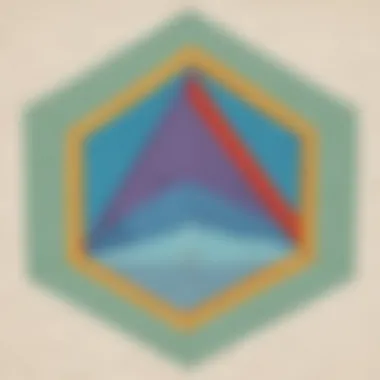

This alignment between simple mathematical expressions and real-life applications prepares children for more advanced topics in geometry. Whether it is for academic knowledge or practical scenarios, being adept in calculating perimeter can significantly improve spatial awareness and overall numerical skills.
Finding the Perimeter of Polygons
Finding the perimeter of polygons is a crucial skill in geometry. It helps to determine the total length around a shape, which is essential for various real-world applications. Young learners will benefit by mastering this concept, as it lays the groundwork for deeper mathematical understanding. Knowing how to find the perimeter can help children in areas such as construction, layout planning, and even simple tasks like measuring space for a garden. In fact, understanding this aspect of polygons can also improve spatial reasoning and problem-solving abilities.
Step-by-Step Calculation
Identifying the Sides
Identifying the sides of a polygon is the first step in calculating its perimeter. Each polygon consists of straight edges, called sides, that connect at corners, known as vertices. Recognizing these sides is critical; without knowledge of the sides, one cannot proceed further. This task is quite simple for regular shapes, as they have equal sides, but it's compound for irregular shapes where side lengths vary. Young learners should practice by drawing simple polygons and counting their sides to familiarize themselves with the concept. Noticing how many corners a polygon has directly reflects the number of sides. This understanding aids education in more advanced geometrical concepts later.
Summing the Lengths
Once the sides are identified, the next essential step is summing the lengths. This process means adding each side's length together for a total perimeter value. Each side's length contributes equally to form the complete boundary of the polygon. Learners are likely to use a ruler to measure directly if they are drawing the polygon. This activity can reinforce basic arithmetic skills since adding numbers together is fundamental. One simple challenge is to involve young learners in real-life examples, like calculating the perimeter of their bedroom or playground areas. By applying the knowledge practically, children grasp why summing lengths truly matters.
Using a Perimeter Calculator
How to Use the Calculator
A perimeter calculator offers a quick solution to find the perimeter of polygons without manual summation. Users input the lengths of the sides into the calculator, which can promptly provide the result. This tool alleviates potential so-called laborious multiplication or addition mistakes that may occur. Moreover, this promotes independence and efficiency in problem-solving among young learners. Using technology can be adaptable to support varied learning styles, enhancing engagement through interactive features.
Benefits of Using a Calculator
The benefits of using a calculator extend significantly beyond just providing quick results. It provides immediate feedback, allowing learners to check their calculations instantly. This learning tool is particularly advantageous for those less proficient in arithmetic. Any mistakes can be caught promptly, reinforcing the correct understanding of the concept. However, it is still important that using this calculator does not overshadow basic mathematical practices. Thus, while playful exploration using a calculator can enhance learning, balancing traditional methods should remain paramount.
Remember, understanding how to calculate the perimeter is important whether you do it manually or electronically. Skills gained will assist in tackling future mathematical challenges!
- Insert the values:
- P = 2 × (6 + 3)
- P = 2 × 9
- P = 18 m
Using rectangles helps children understand the relationship between parallel sides and reinforces multiplication concepts as well.
Example with a Pentagon
Finally, let’s see how to find the perimeter of a pentagon. A pentagon consists of five sides labeled A, B, C, D, and E. In this case, the perimeter P is found using the formula:
P = A + B + C + D + E
Let’s assume we have a pentagon with sides measuring 2 cm, 3 cm, 4 cm, 5 cm, and 6 cm. Here is the calculation step:
- Sum all the side lengths:
- P = 2 + 3 + 4 + 5 + 6
- P = 20 cm
With pentagons, children get exposure to shapes that are less familiar. It encourages them to explore various shapes and think about how perimeter applies broadly.
Each example strengthens math skills and builds confidence in the concept of perimeter.
Practical Applications of Perimeter Knowledge
Understanding the perimeter of a polygon extends beyond the classroom. It lays the groundwork for numerous everyday tasks and applications. Young learners can connect math to reality by recognizing how the concepts of perimeter are woven into various situations. The perimeter captures the total outside distance of any given shape, making it essential in areas like construction, landscaping, and design. Consequently, learning about it becomes practical and engaging.
Importance in Real Life
The application of perimeter knowledge in real life is significant. Children can apply this understanding in many contexts. Here are a few areas where perimeter matters:
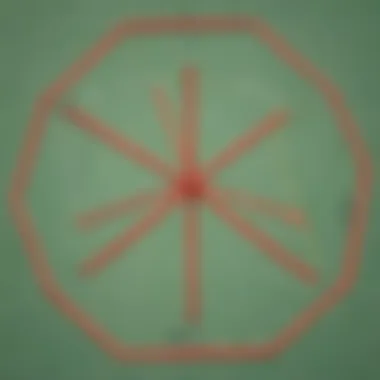

- Home Improvement: When measuring the border for a fence or determining how much tile is needed for a room, knowing the perimeter assists in making informed decisions.
- Art and Craft: Youngsters often engage in projects that require cutting materials. They need to measure edges precisely to create their artwork without wasting resources.
- Gardening: When planning a garden space, children must measure the area's perimeter to organize plants effectively and ensure they fit in the available space.
Learning about the perimeter thus not only enhances math skills but establishes connections to practical, real-world scenarios. With fun activities, the process becomes interactive and meaningful.
Connection to Other Mathematical Concepts
The concept of perimeter also relates deeply to various other mathematical topics. Understanding it serves as a bridge to learning many other important skills. Here are a few interconnections worth noting:
- Area Calculation: Perimeter and area often go hand in hand in two-dimensional shapes. Grasping perimeter forms the basis for discussions about area, helping young learners see how shapes function.
- Geometry: Basic geometric principles revolve around curves and angles. Knowing how to calculate the perimeter supports further exploration of deeper geometrical relationships and properties.
- Measurement: In a broader mathematical study, mastering perimeter contributes to improved measurement within geometry. It enhances skills related to linear measurement and conversions, shaping foundational success.
Learning perimeter is more than numbers and distances. It is a gateway to understanding and enjoying broader mathematical discussions.
Realizing interconnections among various mathematical concepts aids in fostering critical thinking. It allows learners to view math not merely as disconnected rules but as a coherent whole with diverse applications. Thus, engaging with perimeter enriches children's educational journey.
Exercises to Enhance Understanding
Understanding the perimeter of polygons is foundational in geometry. Engaging in practical exercises is beneficial, as it allows young learners to develop a deeper comprehension of the topic. Exercises provide hands-on experiences. These activities reinforce theoretical knowledge through practice. Students can improve their problem-solving skills and critical thinking by engaging in exercises related to perimeter.
Scientific research indicates that active participation in learning increases retention. Therefore, using exercises makes learning significant. Exercises not only focus on calculations but also on understanding geometry's real-life applications.
It's crucial to design exercises that address various learning styles. Some children learn better by doing, while others prefer visual aids or discussions. Additionally, practical problems can highlight how geometric concepts relate to everyday life. Consider practical scenarios like measuring the fence needed around a yard. These contexts help learners understand why knowing how to calculate perimeter is essential.
Below are suggested formats for exercises:
- Calculation examples where students find the perimeter of given polygons.
- Real-life topics where students must apply perimeter calculations.
- Group projects that encourage collaboration and debate on certain challenges related to perimeter.
Creating a mix of individual and cooperative exercises will enhance learning.
Sample Problems for Practice
Sample problems are an excellent way for learners to apply their knowledge. They provide direct experience with perimeter calculations. Below are a few examples:
- Triangle Calculation: A triangle has sides measuring 3 cm, 4 cm, and 5 cm. What is the perimeter?
- Rectangle Problem: A rectangle measures 8 cm by 4 cm. What is the perimeter?
- Pentagon Example: A pentagon has sides of 5 cm, 6 cm, 7 cm, 8 cm, and 9 cm. What is the perimeter?
- Calculation: 3 + 4 + 5 = 12 cm.
- Calculation: 2*(8 + 4) = 24 cm.
- Calculation: 5 + 6 + 7 + 8 + 9 = 35 cm.
These types of calculations serve as practice to reinforce perimeter understanding.
Group Activities
Group activities foster a sense of teamwork and community among students. Working together on perimeter-related challenges helps enhance their grasp of the concept. Here are some engaging group activities:
- Fencing Project: In groups, students can determine how much fencing is needed for a rectangular garden. They can use basic measurements to compute perimeter.
- Geometry Walk: Take students outside and measure real objects' perimeters. Children can measure playground equipment or benches and record those figures. They can share for added discussion.
- Interactive Games: Use board games or online quizzes focused on perimeter. Breaking a potentially dull topic into a friendly competition often makes it stimulating.
Bridging individual work with cooperation enriches the learning experience. Activities can capture a child's interest for better understanding. Together, these exercises and activities shape a strong geometry foundation.
Finale
The conclusion of an article is crucial as it reinforces key learnings and alleviates lingering questions. In this guide, we discussed how essential it is for young learners to grasp the concept of perimeter, using simple methods and examples. When students understand how to calculate perimeter, they not only develop math skills but also build a foundation for more complex geometric concepts.
Summary of Key Points
- Definition of Polygon and Perimeter: Young learners have explored what polygons are, along with the vital role of perimeter in geometry.
- Calculation Skills Developed: They have learned to identify sides and sum their lengths correctly, building a skill set that adds confidence in problem-solving situations.
- Practical Examples: Through various polygon examples like triangles, rectangles, and pentagons, learners see how perimeter calculations apply in real-life scenarios.
- Interactive Learning: Using perimeter calculators was highlighted, demonstrating how technology can enrich understanding.
Encouragement to Explore Further
After gaining foundational skills in finding the perimeter, young learners are encouraged to dive deeper into geometry. They can expand knowledge by exploring related topics such as the area of polygons or the concept of angles. Participation in group activities can ignite a further interest and make learning enjoyable.
The journey does not have to stop here. Encourage curiosity by asking questions and experimenting with new calculations. Using resources like Wikipedia or engaging with educational platforms can provide additional knowledge. Understanding such concepts is a lifelong benefit in study and everyday encounters.







